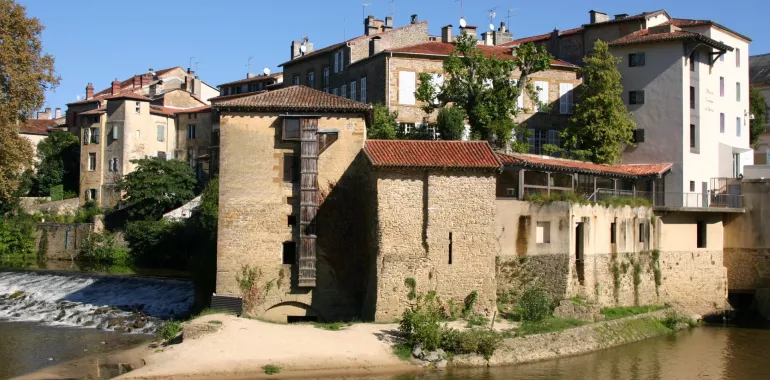Nature & small heritage
68,01 Km
4 h 30 min
I cycle often
68,01 km cycling route from Mont-de-Marsan to Dax
You might think you’ve arrived in Spain earlier than expected along the EuroVelo 3 cycle route, looking around Mont-de-Marsan on a sunny day, what with its bullring and adverts for its flamenco festival! However, the Musée Despiau Wlérick, with its figurative sculptures, the Parc Jean Rameau, and the well-laid-out banks of the Midouze River, with its gentle quays, are southwestern French in feel. Riding on towards Dax, you might explore the local religious heritage, notably at Carcarès-Sainte-Croix and Saint-Vincent-de-Paul. For the more adventurous, leave your bikes a while to take a canoe trip down the Midouze, or to enjoy a hike in the Adour’s barthes, wetland meadows characteristic of the areas around Saint-Vincent-de-Paul and Pontonx-sur-l’Adour. If after something more relaxing, in Dax, at the end of this stage, recharge your batteries at the thermal spa baths.
Elevation of the stage
163 m 129 m
Waytypes of the stage
Cycle path: 4,30 km By road: 63,71 km
Surface of the stage
Smooth: 64,11 km Rough: 0,67 km Unpaved: 3,23 km
The route
This stage is winding, along cycle paths and minor roads through crops, meadows, wooded stretches and character-filled large villages. Signposted EV3.
Surfacing smooth: asphalt and compacted earth.
Trains
- Mont de Marsan train station: regional TER line with daily trains to and from Bordeaux.
- Dax train station: regional TER line to Bordeaux and high-speed TGV services direct to Paris, Hendaye and Tarbes
Don’t miss
- Mont de Marsan: Musée Despiau Wlérick, designated a Musée de France, with displays of figurative sculptures from the first half of the 20th century that are unique in France. The museum also holds natural history and archaeological collections, has well-laid-out gardens and offers unique views over town.
- Carcarès Sainte Croix: the fortified church of St-Laurent on its hill, its fortified belfry finished off with hoardings, plus there are arrow slits and loopholes. There’s also a picnic area.
- Barthes de l’Adour at Pontonx: wandering through these meadows beside the Adour River can provide wonderful relaxation as well as discoveries.
- Saint Vincent de Paul: birthplace, in 1581, of Vincent de Paul, who trained as a humble priest but founded congregations, becoming an indefatigable campaigner for the poor and, after being canonized in 1737, a Catholic figure recognized around the world. The house where he was born, the Maison Ranquines, is now part of the Berceau de Saint-Vincent-de-Paul, a pilgrimage spot with a museum.
- Buglose: one of the major pilgrimage sites of southwest France since the 15th century. Nowadays, Notre-Dame de Buglose Basilica is known above all for its peal of 60 bells, unique in the world, offering tunes on its chimes several times a week.
- Dax: the Fontaine Chaude, or La Nèhe Spring, emblematic of this thermal spa, built in the 19th century on the presumed site of ancient Roman baths. In former times, 2,400,000 litres of water gushed out daily, at 64°C. The thermal waters here, mixed with the algae that form on the spring’s surface and with clay from the Adour River, go into making a natural medicine, Péloïde de Dax.


Travellers’ reviews